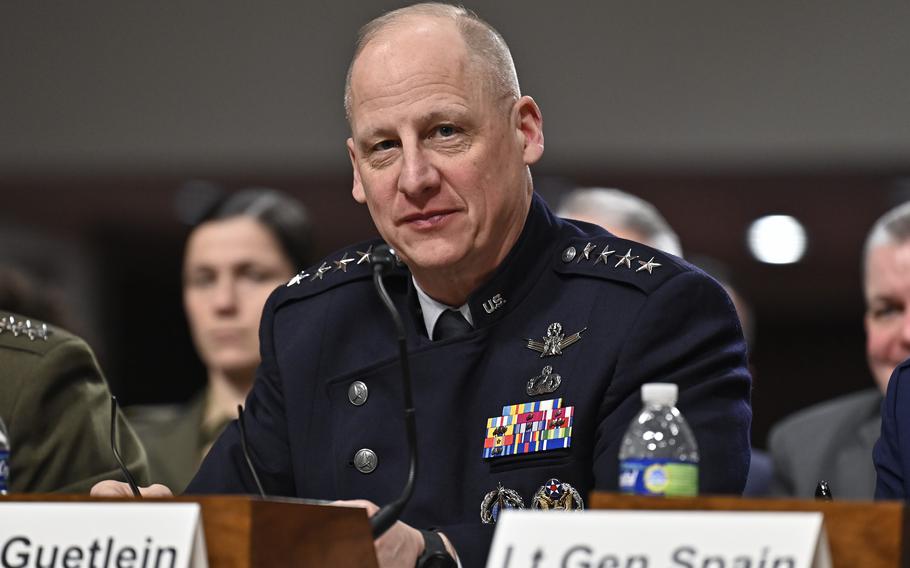
Vice Chief of Space Operations Gen. Michael Guetlein testifies before the Senate Armed Services Committee about joint force readiness in Washington, D.C., March 12, 2025. (Eric Dietrich/U.S. Air Force)
COLORADO SPRINGS, Colo. (Tribune News Service) — The Space Force general tasked with leading the effort to build the new missile defense system known as Golden Dome spoke to a global audience this week about how he will tackle the enormous challenge.
On his second day in charge of the project, Gen. Michael Guetlein spoke during Innovate Space: Global Economic Summit, in Virginia to outline his vision for the undertaking that’s been likened to the effort to build the first atomic bomb.
In this case, Guetlein hopes to buy existing technology to deliver new missile defense in three years, as President Donald Trump requested.
“The technology we need to deliver Golden Dome exists today, it has just never been brought to bear on this problem set,” Guetlein said Tuesday.
The U.S. has ground-based missile defense with 40 interceptors in Alaska and four in California, but its not enough to defend against Russia and China’s updated arsenals.
Congress recently approved $25 billion as an initial investment in the system, that is expected to bring a windfall of investment to the space industry in Colorado Springs and elsewhere. The whole system is expected to need $175 billion to come to fruition.
In his new position as the direct reporting program manager for the project, Guetlein said he will have significant authority over budgets, direct hiring and architecture. He expects to run the effort with a small team that will draw on expertise not only from the Department of Defense, but from industry and academia.
He said he is looking for “not only the right talent, but the right personalities that understand how to go fast.”
The largest technical challenge will likely be building a space-based interceptor to bring down missiles, he said. Every element needed for the task exists, but he faces the challenge of doing it economically at scale. A space-based interceptor, could be vehicle launched from a satellite to hit an incoming threat.
Geutlein also reminded the crowd that the architecture of Golden Dome has yet to be determined. He has 60 days to deliver it. As part of that work he expects to meet with the leaders of Space Command and Northern Command in Colorado Springs on Thursday.
It will also require close collaboration with the leaders of the different service branches, he said.
“This capability is nothing unless I have got trained operators,” Geutlein said.
U.S. Rep. Jeff Crank, R-Colo., followed Geutlein on stage at the summit, as the co-chair of the Golden Dome Caucus in Congress. In his role, he expects to educate other representatives on the initiative so that it can receive follow-up funding.
He also noted that the National Defense Authorization Act includes a provision to help speed up acquisitions by laying out what the problems are and allowing the industry to propose solutions, rather than prescribing them.
“The free-market system is such a great system, but sometimes we crush it with Pentagon bureaucracy,” Crank said.
© 2025 The Gazette (Colorado Springs, Colo.).
Visit www.gazette.com.
Distributed by Tribune Content Agency, LLC.